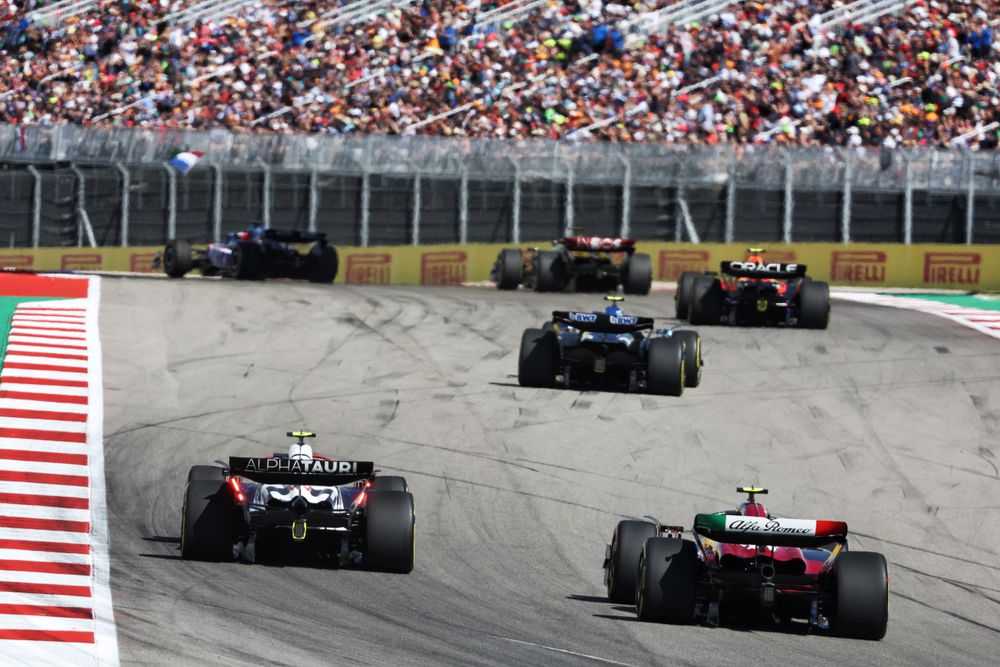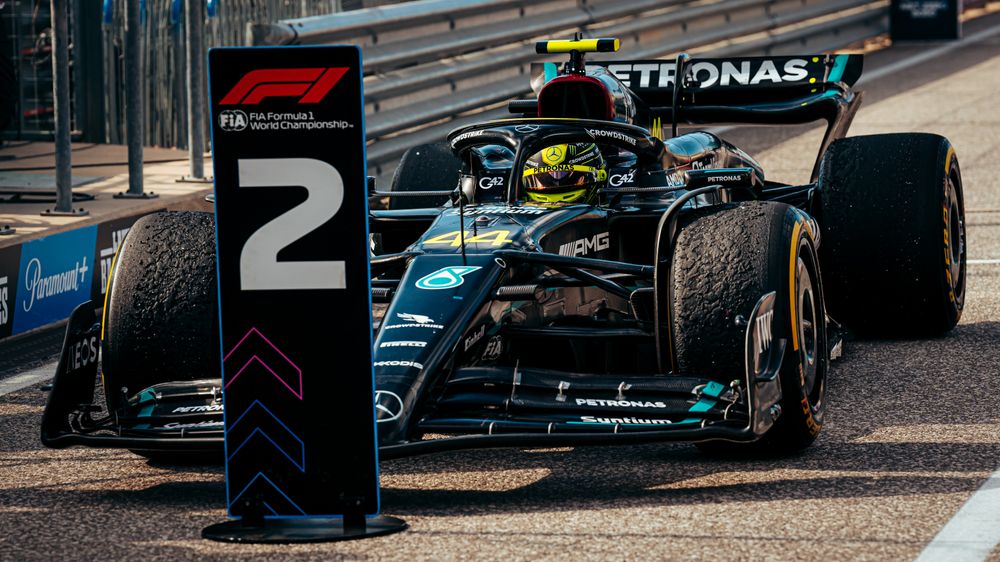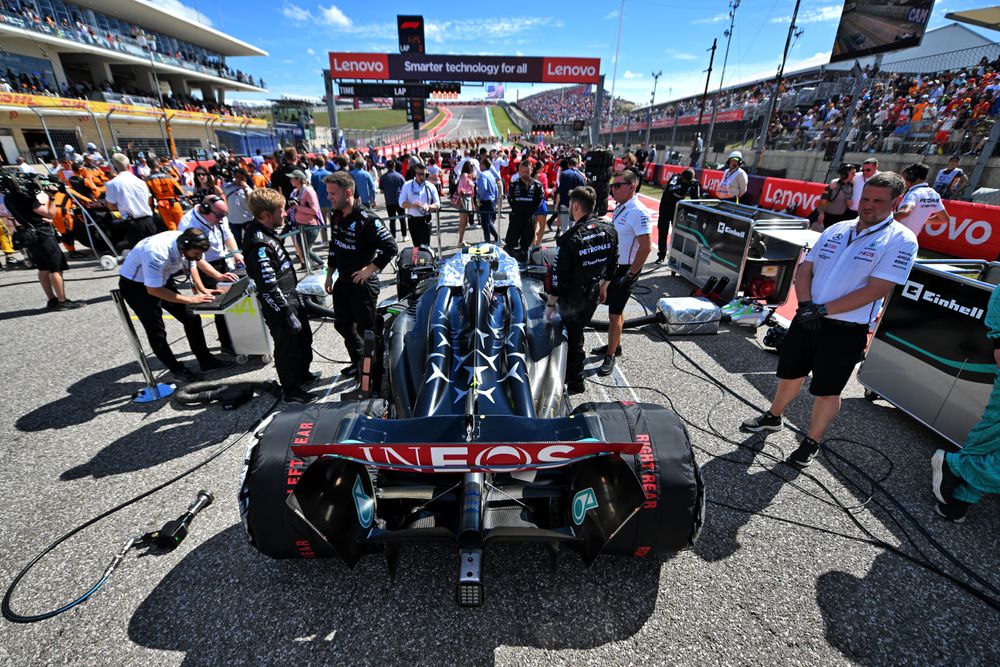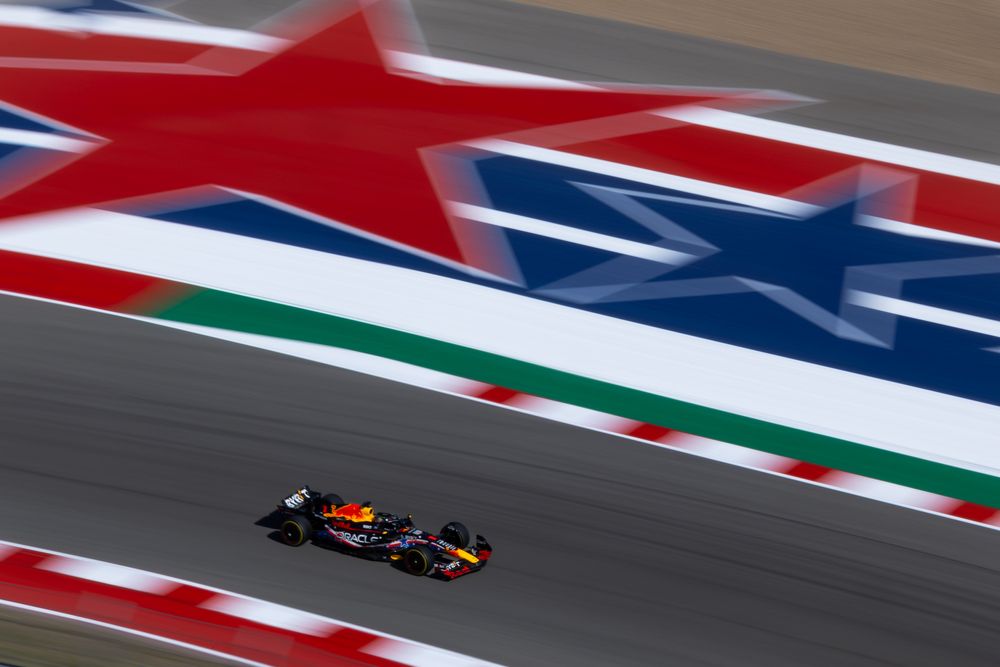Up Next

The disqualifications of Lewis Hamilton and Charles Leclerc from the United States Grand Prix raise an uncomfortable thought: how many other Formula 1 cars were illegal, but weren’t caught?
Hamilton’s Mercedes and Leclerc’s Ferrari were two of just four cars to undergo a physical floor and plank wear inspection check. The others were Max Verstappen’s race-winning Red Bull and the McLaren Lando Norris used to finish third - both passed.
But the remaining 16 cars, who knows? They could all be legal, all be illegal, or a mix of the two. The point is we don’t know. We don’t know about the second Ferrari that inherited a podium because the disqualification of two cars did not mean their respective sister cars had to be automatically checked as well.
There is no guarantee that Carlos Sainz’s Ferrari or George Russell’s Mercedes would have been found to be illegal as set-ups can be slightly different between cars and different approaches from drivers to kerb usage, for example, can mean an all-important few tenths of a millimetre difference in plank wear by the end of a grand prix.
And we don’t know whether any of the other cars that scored points in this race broke the plank rules either. Or any cars outside of the top 10 either. In fact, checking the floor and plank isn't always on the to-do list - at least based on what the FIA discloses.
There appear to have been no plank checks carried out in Qatar or Japan, for example. And none at some other races earlier in the season. The last physical floor and plank wear inspection appears to have been carried out post-race before the US GP was in Singapore, on Verstappen’s Red Bull and Fernando Alonso’s Aston Martin.
This is presumably because the risk of plank wear was perceived to be a lot lower at the intervening races. This ties in with the FIA being able to target problem areas when it sees fit.
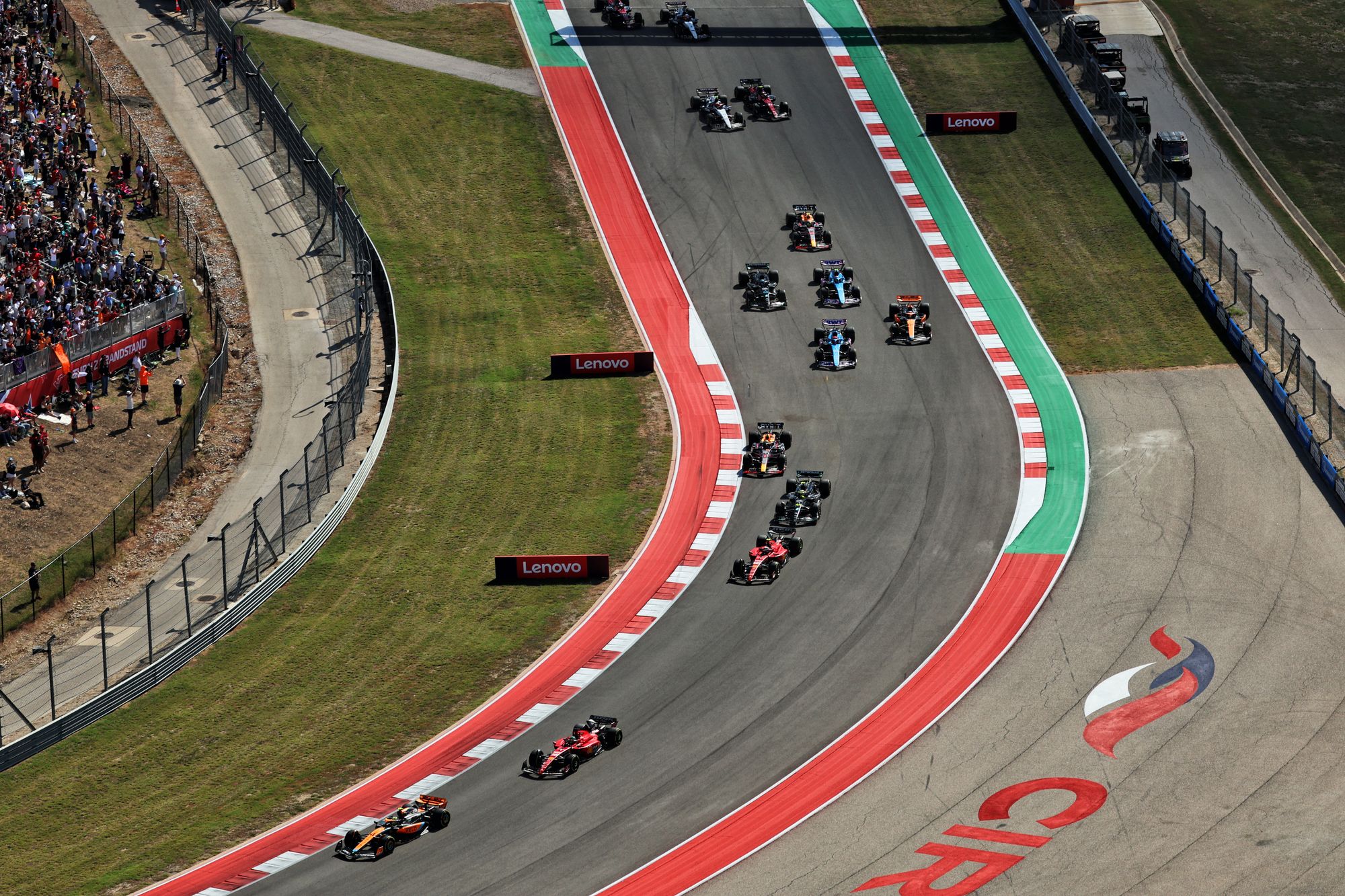
And as the disqualified teams acknowledged at Austin, the nature of the circuit and the sprint weekend format clearly created the potential for some plank trouble - which makes it likely the officials specifically wanted to check the leading cars for compliance.
But the selective scrutineering process means there could be other cars further down the order who have got away with it simply because they weren’t checked.
The FIA has access to a vast amount of data including last year’s new aerodynamic oscillation metric. Maybe this guides the officials on where to look - but even if so, it’s only a clue of where to look. It proves nothing itself.
And that is the point. The FIA had good reason to want to check some of the leading cars and found that two of them were illegal. It’s not a grand leap to think that some of the other 16 might have failed the same checks too - so why not be more sure?
It’s important to note that this is, to a degree, just a frustrating reality we have to accept. While the FIA’s post-race scrutineering checks are extensive they are not - they cannot be - all-encompassing. Nor should they be. Some stuff simply does not merit every part of every car being checked. Short of keeping hold of the cars for days after the race, a degree of discretion has to be applied.
For example, every car is weighed, for obvious reasons, just like every car has its starting tyre pressures checked. But in Austin only the Red Bull of Sergio Perez, Norris's McLaren (again) and the AlphaTauri of Yuki Tsunoda were subjected to a battery of surface aerodynamic components and bodywork tests like the floor edges and front and rear wings. There are then much more extensive checks of one car, genuinely picked at random, afterwards.
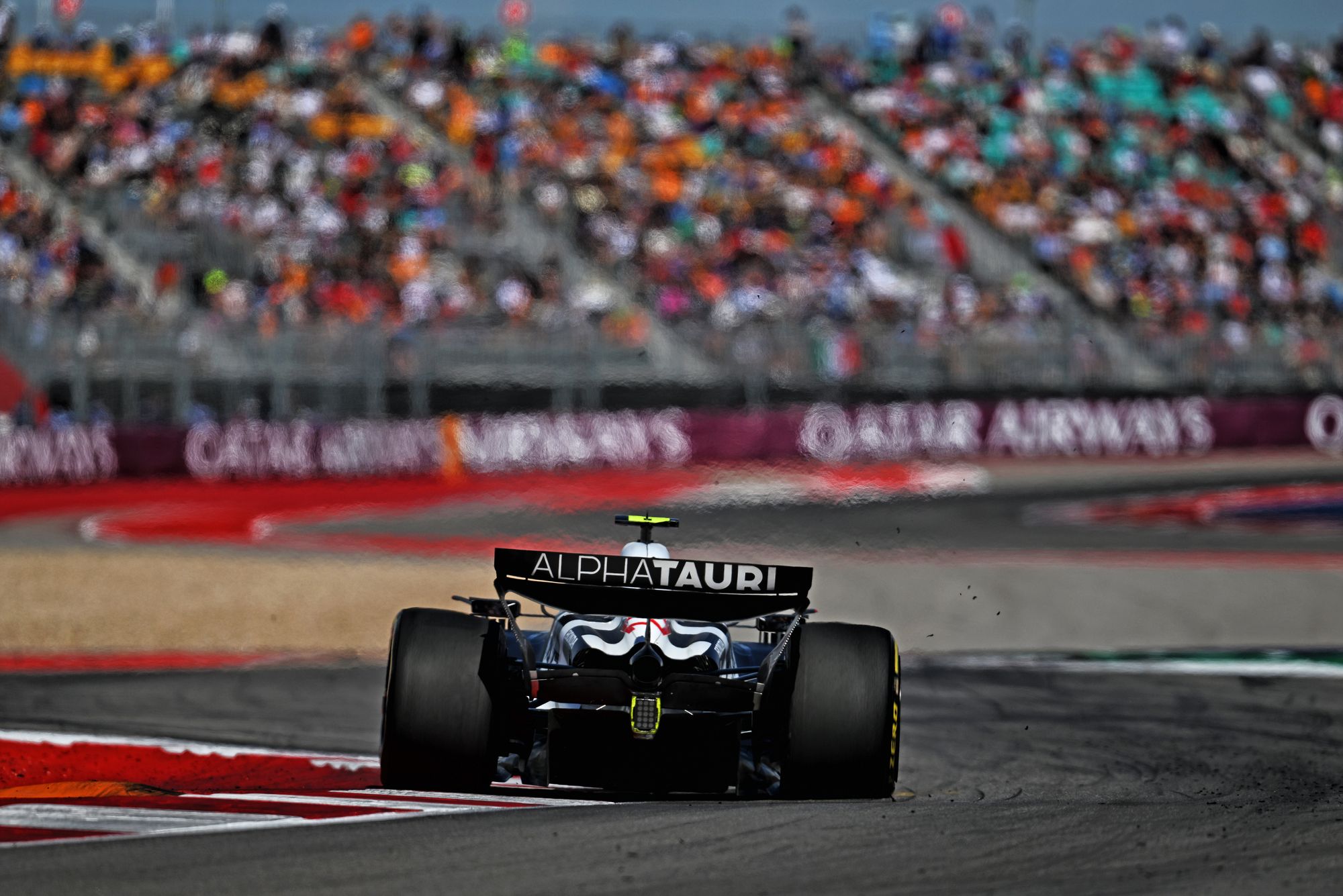
Streamlining scrutineering is a necessary practicality. And there’s also an argument for not telegraphing to teams what is being checked when - otherwise someone will eventually try to game the system, and take a chance at a race where Technical Rule X will not be checked. The system of random checks does act as a reasonable deterrent from taking liberties.
But many might assume that plank wear, given the implications it has for how low cars can run (which is potentially a tangible performance enhancer), falls under the category of 'should always be assessed'. And what happened in Austin may well serve as an example of how scrutineering can be improved.
Is it not possible, sensible and just plain fair to bake in enough time or create a proper protocol to check the planks of more than just a handful of cars at such races? Or are we meant to accept that at races where there is clearly a serious risk of a specific rules breach a vast majority of the grid will have the chance of getting away with breaking the rule that one or two ‘unlucky’ checked cars get thrown out for?
The solution is not to check every car for everything in the rules. But scrutineering can probably be improved and beefed up in some way.
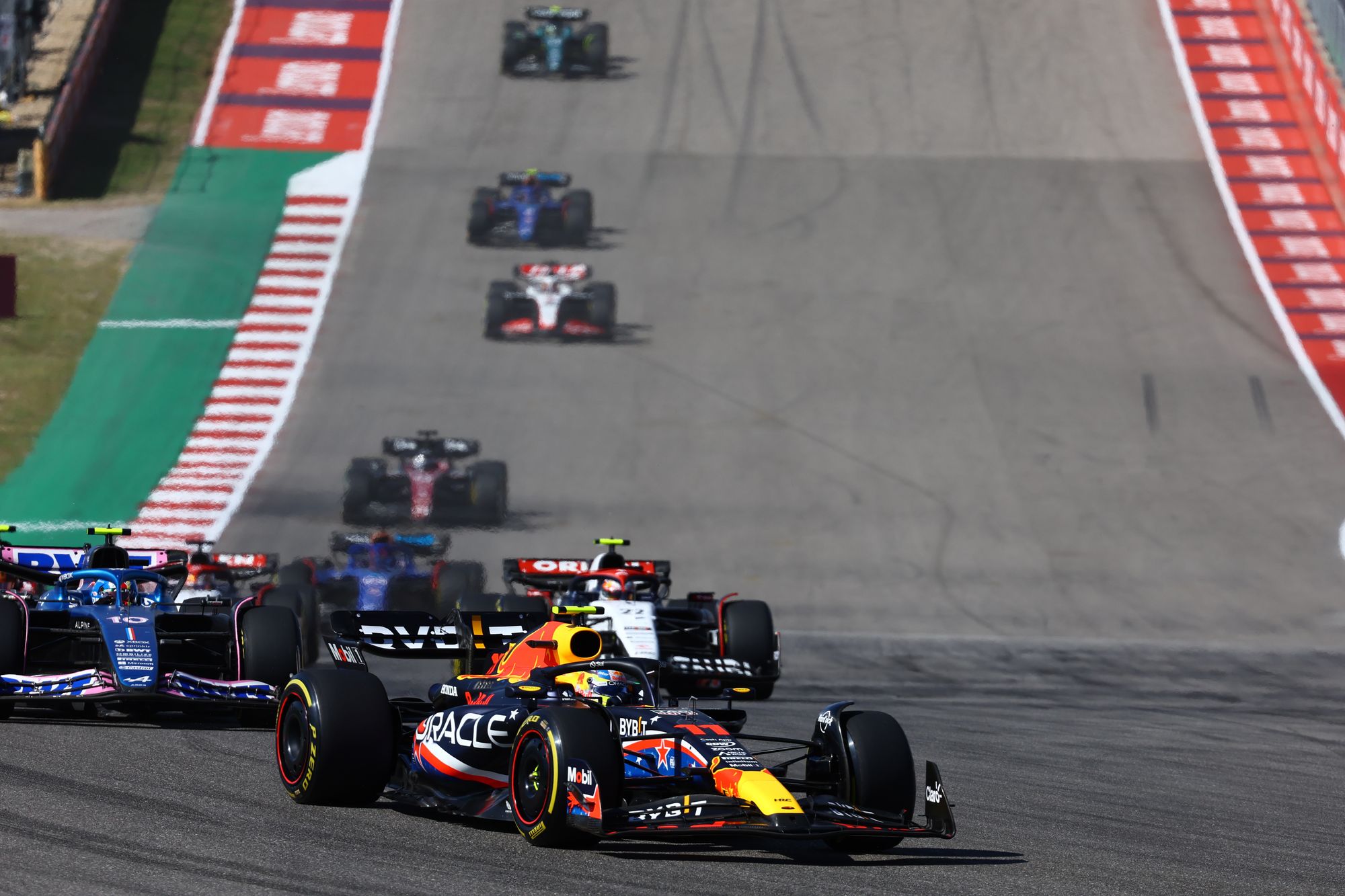
Gary Anderson’s suggestion of committing all the 10 points-scoring cars to the same list of checks, plus any that subsequently inherit a points-scoring position, feels like a useful starting point for a compromise. And it would certainly seem logical to find a way to interrogate the sister car for any that is found to have committed a technical breach.
There is clearly a method to picking and choosing the battles in post-race scrutineering, and maybe it can be better refined.
Ultimately, at any given race weekend, it is not possible to know how many cars are really legal or illegal across the board. Obviously nobody sensible would accept some cars being allowed to be underweight, for example.
The line clearly has to be drawn somewhere - and what happened in Austin suggests that, as far as plank checks are concerned, it's not quite in the right place.


